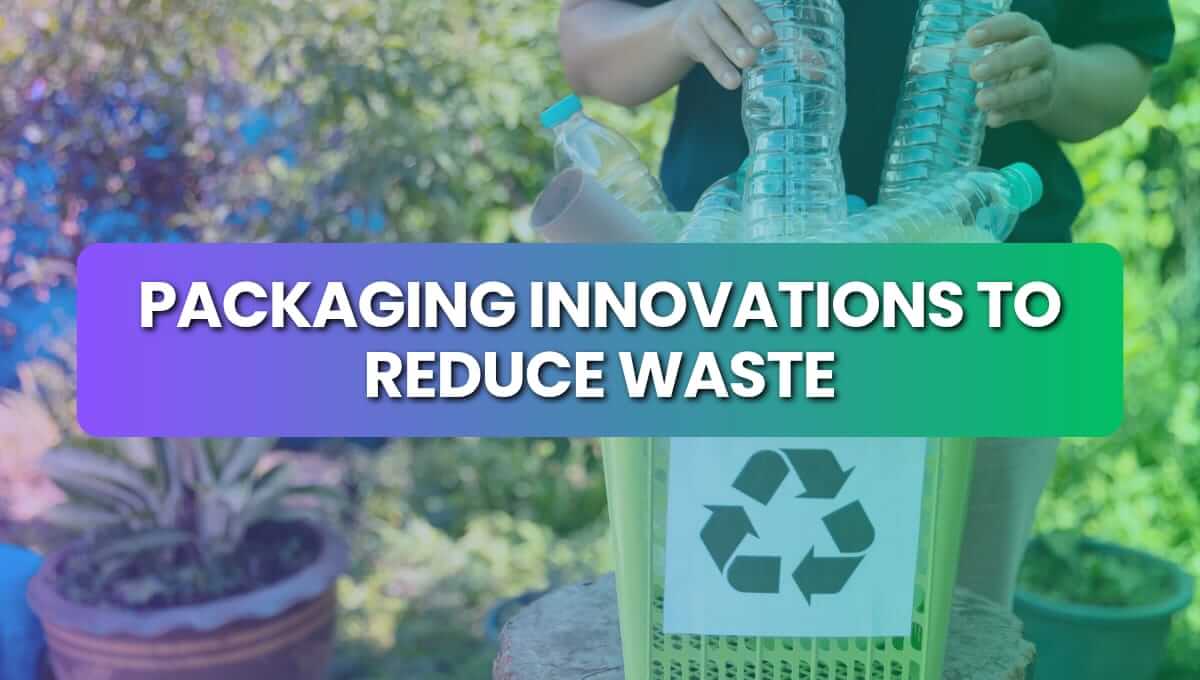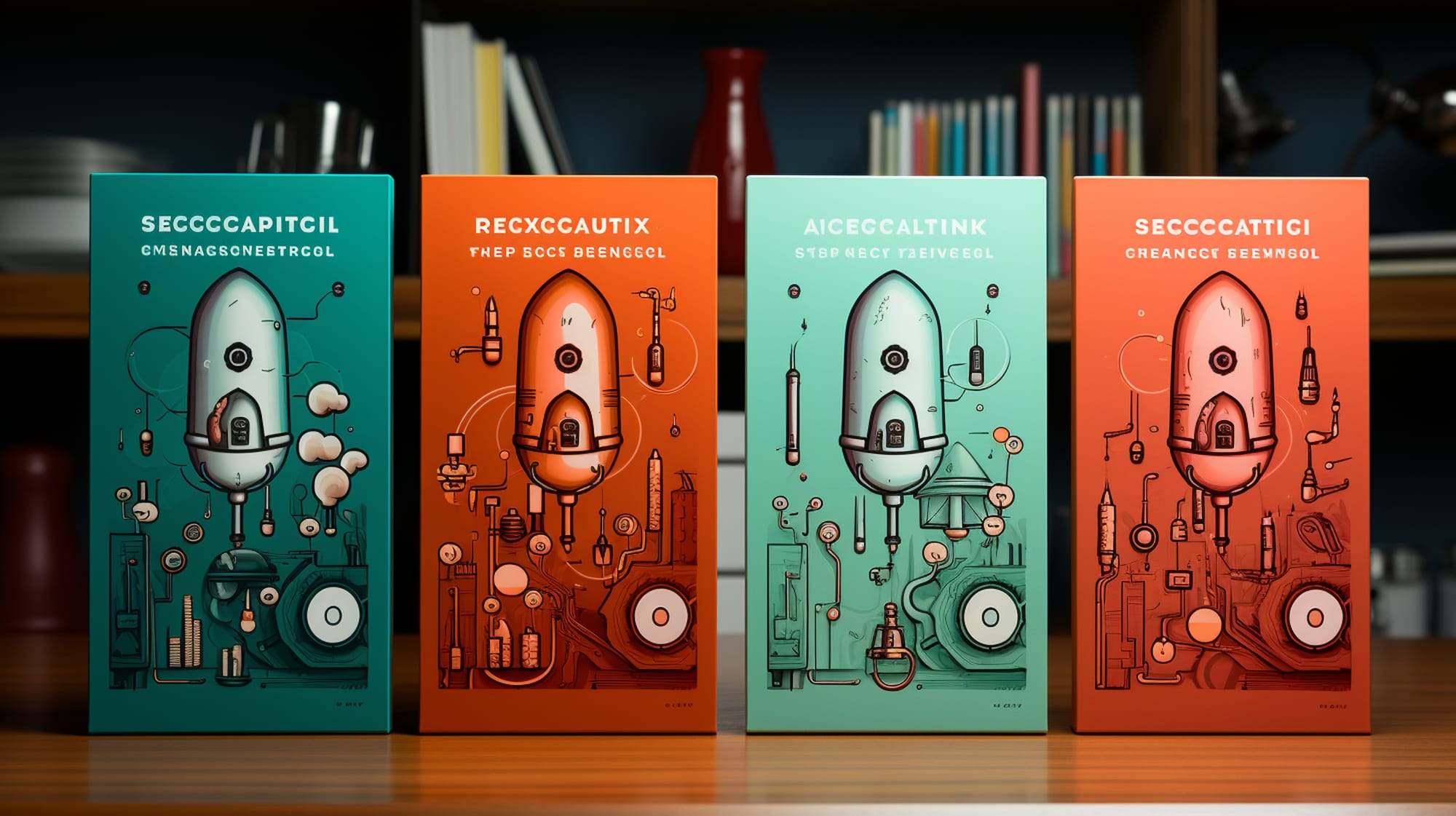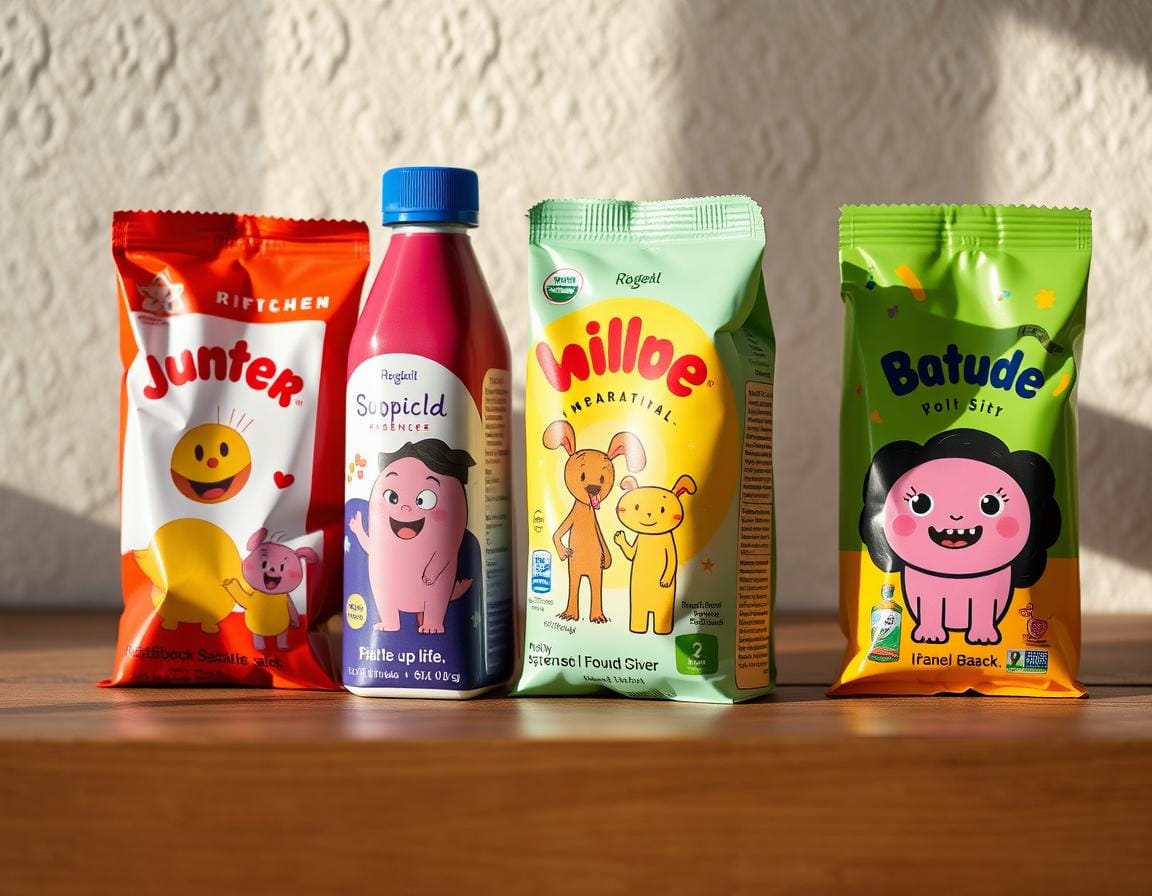Packaging Innovations To Reduce Waste

The world is facing a huge problem that needs to be resolved as soon as possible. Many big businesses are trying to implement solutions to eliminate this problem. So what is that problem?
It's increasing the amount of waste generated every year.
One of the biggest causes of this waste is traditional packaging. Most of it ends up in landfills or pollutes the environment.
Customers are extremely cautious about this, and that's why they prefer companies that implement eco-friendly packaging.
According to the latest stats, customers willingly pay more for brands that follow sustainable approaches. However, companies don't want to compromise on functionality to appeal to customers. In this guide, we will discuss some of the most incredible packaging innovations for reducing waste. Let's get started.
Is Traditional Packaging the Same As Innovative Packaging?

The short answer is No.
Traditional packaging utilizes single-use plastics. It has dominated the market for years because of several reasons such as:
- Affordability
- Durability
- Versatility
However, the problem lies much deeper. Traditional packaging has several environmental challenges, which is a warning sign telling us that it needs to be replaced.
Here are some differences between each that you need to know.
7 Innovative Sustainable Packaging Solutions
Now that you know about innovative packaging solutions and their benefits, let's dive deeper. Remember that these solutions are just the beginning of a sustainable era. Shortly, we might see some groundbreaking packaging that could help the brands resonate even more with the audience.

1. Mono-Material Packaging
You can tell by the name that mono-material is made of just one material. It could be either:
- Polypropylene (PP)
- 100% Sugar Cane
But what's the significance of these materials?
They are 100% recyclable. The customer can easily recycle, and it removes the hassle of separating components.
Let's understand it with an example.
Pumps are extremely difficult to recycle. They have a metal spring inside, which makes the process even more difficult. To solve this problem, the pump's design has been innovated. It is an all-plastic pump, but the customer can recycle it easily, even with the pump intact.
Mono-material packaging makes recycling easier. Its biggest advantage is that it supports a circular economy. So, the plastic used in this design can be recycled instead of ending up in landfills.
2. Biodegradable Packaging
The demand for sustainable packaging is increasing at a rapid rate.
Biodegradable and compostable packaging are incredible solutions to the problem of traditional packaging waste. However, they are both different and have distinct advantages. They depict the natural procedure of recycling organic waste.
Remember, All Compostable Packaging = Biodegradable
But Not All Biodegradable Packaging = Compostable
How can you distinguish between both?
The primary difference is in the rigorous testing of compostable packaging. Compostable packaging breaks down after a specific time frame.
Does it release any toxic substances?
No. They don't contribute to adding harmful components to the environment.
However, biodegradable products may lack this specific quality. The biggest benefit of using compostable packaging is that it converts itself into healthy compost, which can be utilized to enrich the soil.
3. Mushroom Packaging
You often use mushrooms to eat, but do you know it's also used in packaging?
In mushroom packaging, a specific material made from mycelium is used. Because of this compound, mushrooms can grow quickly in the wild.
This packaging creates a foam-like material that is later combined with the hemp curd. Do you know why?
Because it converts packaging into a high-performance insulating solution, mushroom packaging is further used for packaging fragile materials. So, if you are selling breakable products like wine glasses, crockery, etc., mushroom packaging might be the right innovative packaging for you.
Because of effective insulation, it protects the goods during transportation and storage. But what about perishable items? Is mushroom packaging suitable for it?
Yes.
It can retain the coolness of these items. Several food and beverage companies are considering using this packaging. In comparison to conventional foam packaging, mushroom packaging offers another huge advantage.
It is fully compostable not only in landfills but also in homes. So, in a few months, it will decompose into nutritious natural substances.
4. Algae-Based Packaging
You might have read about algae only in your science books, right?
So it might come across as a surprise that algae is now used in packaging. It is a natural material that has recently gained popularity in packaging solutions. The commercial applications of algae are extremely diverse. Algae has several advantages over sustainable land crops. Some of these include:
- Cornstarch
- Bamboo
- Hemp
Unlike these crops, large-scale algae production doesn't require land diversion. So, making innovative packaging doesn't harm any food crops.
According to the latest studies about algae, plastic materials can be degraded with the help of microalgae. In this procedure, genetic modification is done to produce and secrete plastic-degrading enzymes.
Here's an example so you can understand this concept.
When the above-mentioned procedure was implemented on green microalgae, it was transformed into PETase. It is an enzyme that assists in the degradation of PET. Meanwhile, when the call lysate present in the transformant was incubated with PET, it led to the production of the following:
- Dents
- Holes
- Fully degraded form of PET (also referred to as TPA)
5. Agricultural Byproduct Packaging
Traditional packaging can create huge amounts of waste and harmful toxins. However, this waste can be upcycled and utilized later on. How is that possible?
It is reused to make biodegradable and natural products for packaging. The purpose of agricultural packaging is to reduce the reliance on plastics and harmful packaging materials.
Most byproducts from this source are naturally biodegradable, which is why they're considered a great alternative to conventional packaging practices. The energy required to process these packaging is relatively less.
6. Loop Packaging
Loop is a popular circular shopping platform. They aim to remove single-use plastic waste through their constant efforts. But what are they doing to make it possible?
They are transforming everyday products into disposable items so customers can refill them if they need more.
Let's understand with an example.
If you purchase a brand new hand wash in a bottle and the hand wash is finished after a month, you don't need to buy another bottle. Then what should you do?
You can refill the bottle.
They have partnered with several brands, restaurants, and many other organizations. They are revolutionizing the packaging industry and focusing on a circular reuse ecosystem. Loop is not implementing this method on just one product but thousands of products. They are making reusing products convenient and accessible.
Loop is clearly one step ahead of its competitors. Several sustainable approaches can be learned from their commitment to sustainability.
7. Interactive Packaging
The concept of innovative packaging isn't limited to choosing the right packaging material. It goes beyond that and opens the doors for experimentation. It also includes incorporating creative procedures for designing the packaging. But one thing should not be ignored.
That's maintaining the functionality of packaging.
It should serve its practical purpose while enhancing customer engagement. Interactive packaging should push the target audience to connect with the brand. You could add a QR code or smart labels to your packaging. All of this collectively elevates the entire product experience of the customer.
To Sum Up
Innovations in sustainable packaging are no longer limited to reusable packaging only. Instead, they're becoming more advanced, and that's why we have different forms of packaging to reduce waste. However, it's important to consider crucial aspects such as cost, infrastructure, consumer acceptance, and regulatory support while changing your packaging.
But one thing can't be denied: sustainable packaging is here to stay. It's a step towards a sustainable future and winning customers' hearts.
Want assistance from experts?
Altro Labels is here to incorporate innovative packaging for your business. We have helped several brands grow through the power of packaging. Contact us now for more details.
